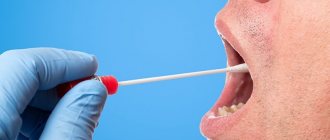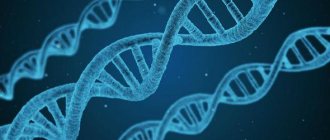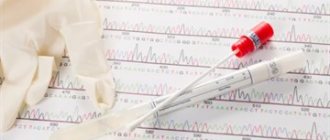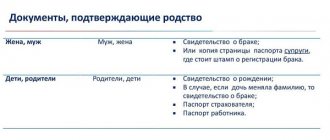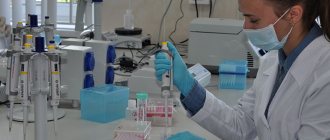Why is the procedure performed?
Often, it is the child who needs to establish paternity using a DNA test. The procedure will help to accurately determine who his biological parent is, due to which it is possible to predict his predisposition to the development of certain genetic diseases or to exclude accidental/intentional substitution of children in the maternity hospital.
DNA test is the most accurate genetic study
Also, the use of the procedure may be necessary when:
- the emergence of proceedings regarding the correctness of all stages of IVF and the use of an egg that was taken from the child’s biological mother;
- the need to provide evidence to the court that will confirm or refute the fact of paternity/maternity;
- establishing true biological parents;
- the need to establish a close relationship in situations concerning the receipt of an inheritance or refusal of it.
Sibling test (sibling test)
Any family secret can be revealed. There are many cases when, years later, it turns out that
maybe it's your brother or sister. DNA sibling testing can determine whether suspected siblings are biological. You can find out whether there are two common parents (siblings) or one common parent (stepbrother/sister).
There are two types of sibling test:
- full-siblin test (when participants know for sure that they have one common parent and want to determine whether they have the same second parent);
- half-sibling test (when one parent of the analysis participants may be common, but the other is definitely not).
There are three possible analysis results:
- participants can be full (or half-) siblings,
- sibling relationship is unlikely
- indeterminate result (when genetic data do not allow us to draw conclusions about the possibility of a particular relationship)
If the probability of relationship is 80% or higher, a conclusion is issued that the sibling relationship
perhaps, with a probability of 10% or lower, a conclusion is issued that the relationship is unlikely. With values of the probability of relationship ranging from 10% to 80%, it is impossible to say how much
there is probably some kind of relationship between people, so an indefinite conclusion is issued.
The analysis requires DNA samples of two people who are believed to be siblings, half-siblings, or brother and sister
The price of a standard (semi-) sibling test is on request.
What does genetic testing show?
By taking a DNA paternity test, you can get answers to the following questions:
- the alleged maternity/paternity of the person who provided the biological sample and the child is confirmed or refuted;
- if maternity/paternity is not refuted, then what is the probability that the result of the examination is not a random coincidence of the individual genetic characteristics of persons who are not relatives (expressed as a percentage).
Often, to conduct this study, a buccal smear (obtaining epithelial cells from the inside of the cheek using a cotton swab), capillary blood in an amount of 0.4-0.5 ml, dried blood spots on a clean paper napkin or gauze disk are used as biological material. salivary fluid, trimmed nails and hairs with preserved follicles. If it is not possible to obtain the listed materials, then other biological samples can be used.
Taking a buccal swab for DNA testing
To understand the intricacies of a DNA paternity test, prospective relatives must contact a laboratory to provide samples or order an individual kit to obtain them at home.
Using the hair shaft is not the most informative material, since it contains a fairly small amount of nuclear DNA, but there is a sufficient amount of mitochondrial deoxyribonucleic acid. This type of DNA is passed from mother to child, so the hair shaft cannot be used to determine paternity. However, this biological material is informative when it is necessary to confirm/refute maternity.
Y-chromosome analysis
Relationship in the male line is determined by examining the Y chromosome. This is one of two chromosomes in the human body that determines its gender.
Women have two X chromosomes, one of which they pass on to their child. For men, everything is more complicated: the male genotype formula looks like XY, and the father will pass on the X chromosome to his daughter, and the Y chromosome to his son. Thus, the Y chromosome is passed on practically unchanged to all male descendants from generation to generation.
The Y chromosome test allows you to determine how closely two men are related on the same paternal line (i.e. grandfather, grandfather's siblings - father, father's siblings - son, sons of father's brothers). And the conclusion is given based on the analysis of the Y chromosome.
This test can confirm or refute whether two men are members of the same family (provided they have the same presumed male progenitor).
This test can also be used to establish paternity in boys in the absence of father's DNA, when it is possible to test samples from the paternal grandfather or the father's sibling. The analysis requires DNA samples from two men who may presumably belong to the same male line.
Price for Y - chromosome test - on request.
The procedure for conducting genetic testing
To understand how to correctly perform a paternity test in compliance with all the subtleties, you need to follow the following algorithm regarding the court decision:
- The plaintiff must file a petition for genetic testing.
- The judge issues a ruling determining its conduct, the date, time and place of collection of biological material.
- Participants in the process submit documents identifying their identities.
- The collection of biological material is carried out by an independent person (collector), who is a doctor or lawyer. After the envelopes are sealed, they are signed and stamped by a third independent person.
- Afterwards, a protocol is drawn up, which is confirmed by the signatures of the study participants and the collector.
- The resulting result is a document of 20 sheets, which reflects the conclusion of a genetic examination, photos of alleged relatives, their genetic profiles and an electropherogram.
- The conclusions of the study are announced exclusively at the meeting.
Twins
There are two types of twins - identical and fraternal. Identical twins occur when a fertilized egg divides and each daughter cell gives rise to a separate organism. Identical twins are always of only one sex and are genetically almost identical. Fraternal twins can be of the same or different sexes and will have significant differences in their DNA structure. Using advanced molecular genetic technology, we are able to determine with 100% accuracy whether two twins are identical or fraternal. For analysis, DNA samples of two persons who are in an alleged blood relationship are required.
Timing and cost of DNA paternity test
The average cost of a genetic examination is 20,000 rubles. It can only be carried out in a private laboratory, so the price depends on the institution to which the defendant applied to submit biological material.
Study of DNA loci during genetic examination
The duration of a DNA test is usually from 5 to 9 days. However, obtaining results can be accelerated if the customer wishes and makes an additional payment, according to the laboratory’s price list.
DNA examination: definition and description
DNA examination is the identification of the individual characteristics of the human body by deciphering its genetic code. Today, the market for DNA testing services offers several basic tests that are widely used in medicine, sports and forensics:
- Test to establish paternity and relationship as such.
- Predispositions and contraindications in sports.
- Diagnosis of viral and infectious diseases at an early incubation stage makes it possible to determine the presence of infection even if there is only one molecule in the sample (when the disease has not yet manifested itself and it is not possible to detect it in any other way).
- Diagnosis of hereditary diseases, predisposition to diseases and identification of allergic reactions.
- A detailed analysis of nationality and all ethnic groups in the family.
- Determining a person's identity by DNA
Who should pay for a court-ordered DNA test?
Reimbursement of the amount spent on genetic testing to determine paternity is assigned to the defendant. The situation is as follows: for example, if the child’s mother requested a DNA test, then she must pay for the procedure. After documenting her words, the mother receives full compensation for the money spent on the procedure.
In a situation where the petition is subject to partial satisfaction, the cost of the genetic examination is evenly distributed among the participants in the trial.
The procedure for ordering a DNA paternity test through the court
The court and each of the participants in the litigation may make a request to order a DNA test to determine paternity. In a situation where the defendant refuses to undergo an examination, the court cannot force the person to undergo the procedure forcibly, even if genetic analysis is the only way to confirm a family relationship.
The application must clearly formulate the question that the laboratory staff will need to answer. It is also necessary to indicate the reasons for the diagnosis.
The determination of the feasibility of conducting a genetic examination is determined by the court
The documents must indicate the name of the plaintiff or defendant, who will bear all costs related to the conduct of the study. In the event that a person in a lawsuit, declared as a guarantor of reimbursement for the cost of a DNA test, evades payment, the costs of the procedure are evenly distributed among the participants in the litigation.
Interpretation of diagnostic results is carried out by laboratory assistants and geneticists of the institution who have the appropriate education. In some situations, the plaintiff and defendant decide to independently take an analysis and further present its results as strong evidence. In this case, you need to carefully select a laboratory, checking that it has the appropriate license.
If a genetic examination is ordered by a court, then the documentation also indicates the institution in which it should be carried out. If necessary, the judge may invite a specialist to participate in the meeting and announce the results.
Features of genetic testing for paternity
You can collect the material at home using a disposable kit or in the laboratory, where specialists can perform all the steps without errors. A buccal smear can be used as a primary material; seminal fluid, blood, hair, nails, etc. can be used as a non-standard material.
The time required to obtain the result can vary from 4 to 9 days (depending on the time available to the customer).
The result of the DNA test is written confirmation of paternity or its exclusion. For more detailed information about the procedure, the client can contact the laboratory. Order a free legal consultation



